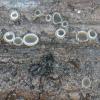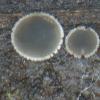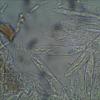
09-01-2026 17:41
Arnold BüschlenHallo, F. dilatata wird von vielen Bryoparasiten

10-01-2026 20:00
Tom SchrierHi all,We found picnidia on Protoparmeliopsis mur

07-01-2026 22:22
 Danny Newman
Danny Newman
Tatraea sp. on indet. hardwood The Swag, Great Sm

10-01-2026 01:18
 Danny Newman
Danny Newman
cf. Neovaginatispora fuckelii on indet. shrub Pre

07-01-2026 10:24
 Danny Newman
Danny Newman
Pezicula sp. on indet. hardwood Appalachian Highl

09-01-2026 10:08
 Blasco Rafael
Blasco Rafael
Hola, en el mismo habitat que la anteriorRetamaDia

08-01-2026 21:22
 Blasco Rafael
Blasco Rafael
Hola, He recogido esta muestra de Orbilia sobre Re

07-01-2026 17:29
 Marc Detollenaere
Marc Detollenaere
Dear Forum,On a barkless Populus I found some smal

10-11-2021 17:33
 Riet van Oosten
Riet van Oosten
Add-on topic http://www.ascofrance.com/forum/7059

07-01-2026 10:05
 Danny Newman
Danny Newman
cf. Chaetospermum on XylariaCosby Campground, Grea
Pyrenopeziza s/ Cirsium palustre.
Luc Bailly,
08-02-2012 18:25
Cela fair plusieurs fois que je ne parviens pas à mettre de nom là-dessus. Hormis un nom de genre: Pyrenopeziza.
Récolté le 13.08.11, sur tiges mortes de Cirsium palustre. Réserve naturelle domaniale de la Grande Fange de Bihain, Vielsalm, prov. Luxembourg, B., env. 550 m d'altitude.?
Apoth. sessiles, en groupes ou colonies, en coupe fermée puis aplatie, -> 0.8 mm. Marge fimbriée. Couleur gris-brun fuligineux, très sombre à l'état jeune. Excip. semblant un peu poilu ou du moins nettement furfuracé.
Exc. ectal banal, text. glob., brun. Poils atteignant 45 µ.
Asques 8-sp., sp. bisériées, IKI BB, (30) 38-50 x (5.2)6-7(7.5) µ. Crochets non remarqués ou absents.
Sp. un peu asymétriques, parf. symétriques, hyalines, huile = 2, non septées, (7)8-10(11) x (1.5)1.8-2.2 µ.
Paraphyses cylindriques, à peine réfringentes, x 2.5-3-3.5 µ p. ex. KOH nul.
Amitiés - LUC.
Raúl Tena Lahoz,
08-02-2012 20:32

Re : Pyrenopeziza s/ Cirsium palustre.
Maybe Pyrenopeziza urticicola.
Salut,
Raúl
Salut,
Raúl
Luc Bailly,
09-02-2012 16:17
Re : Pyrenopeziza s/ Cirsium palustre.
Yeah, but I think I excluded that one due to the size of the spores, way too big in my sample IMO. (I corrected the data's. Meh, distraction.)
Oh, so, Bernard Declercq's key gives me Pyrenopeziza escharodes, which matches fine with the size of spores and hair, and which gives oil -> 1.5, which is a bit lower than on my sample, but noot much. Except if one has a better solution, I think I'll stick with P. escharodes.
Cheers - LUC.
Oh, so, Bernard Declercq's key gives me Pyrenopeziza escharodes, which matches fine with the size of spores and hair, and which gives oil -> 1.5, which is a bit lower than on my sample, but noot much. Except if one has a better solution, I think I'll stick with P. escharodes.
Cheers - LUC.








